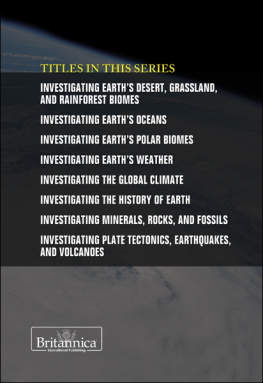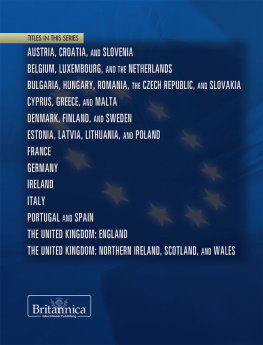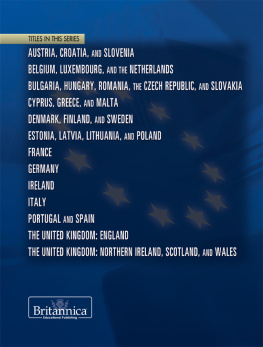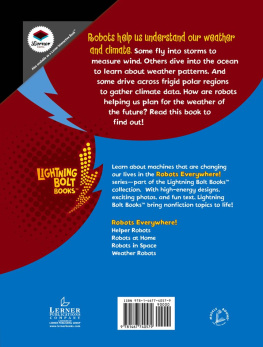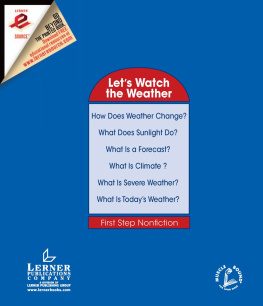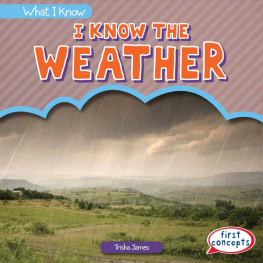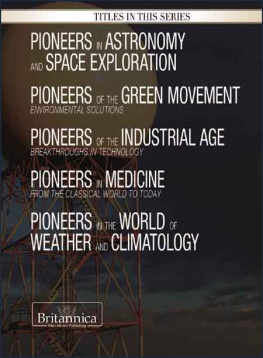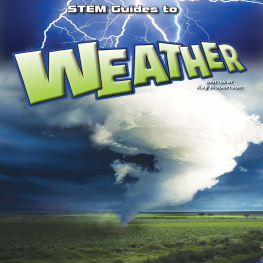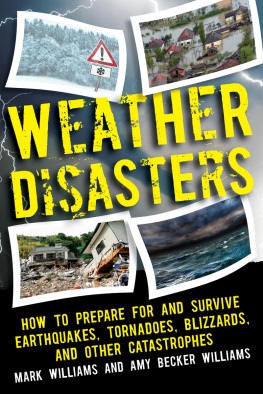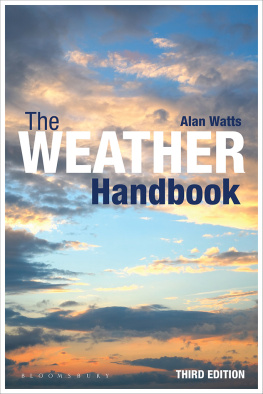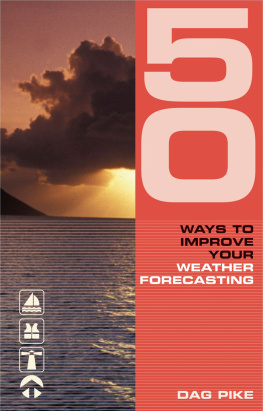INVESTIGATING
EARTHS WEATHER
INTRODUCTION TO EARTH SCIENCE
INVESTIGATING
EARTHS WEATHER
EDITED BY MICHAEL ANDERSON

Published in 2012 by Britannica Educational Publishing
(a trademark of Encyclopdia Britannica, Inc.)
in association with Rosen Educational Services, LLC
29 East 21st Street, New York, NY 10010.
Copyright 2012 Encyclopdia Britannica, Inc. Britannica, Encyclopdia Britannica, and the Thistle logo are registered trademarks of Encyclopdia Britannica, Inc. All rights reserved.
Rosen Educational Services materials copyright 2012 Rosen Educational Services, LLC.
All rights reserved.
Distributed exclusively by Rosen Educational Services.
For a listing of additional Britannica Educational Publishing titles, call toll free (800) 237-9932.
First Edition
Britannica Educational Publishing
Michael I. Levy: Executive Editor, Encyclopdia Britannica
J.E. Luebering: Director, Core Reference Group, Encyclopdia Britannica
Adam Augustyn: Assistant Manager, Encyclopdia Britannica
Anthony L. Green: Editor, Comptons by Britannica
Michael Anderson: Senior Editor, Comptons by Britannica
Sherman Hollar: Associate Editor, Comptons by Britannica
Marilyn L. Barton: Senior Coordinator, Production Control
Steven Bosco: Director, Editorial Technologies
Lisa S. Braucher: Senior Producer and Data Editor
Yvette Charboneau: Senior Copy Editor
Kathy Nakamura: Manager, Media Acquisition
Rosen Educational Services
Alexandra Hanson-Harding: Editor
Nelson S: Art Director
Cindy Reiman: Photography Manager
Matthew Cauli: Designer
Introduction by Alexandra Hanson-Harding
Library of Congress Cataloging-in-Publication Data
Investigating Earths Weather / Edited by Michael Anderson.First Edition.
pages cm.(Introduction to Earth Science)
In association with Britannica Educational Publishing, Rosen Educational Services.
Includes bibliographical references and index.
ISBN 978-1-61530-548-3 (eBook)
1. WeatherJuvenile literature. 2. PaleoclimatologyJuvenile literature. I. Anderson, Michael
(Michael J.), 1972
QC981.3.I58 2012
551.6dc22
2010048950
On the cover, : This photograph of Hurricane Epsilon in the Atlantic Ocean was taken on Dec. 3, 2005, by a crewmember aboard the International Space Station. These massive, circular storms originate over tropical oceans. NASA
Interior background www.istockphoto.com/MvH
CONTENTS







INTRODUCTION

C hances are, the weather affects you every day. It affects whether you wear shorts or a winter coat, whether you can enjoy a picnic or ski trip, and, sometimes, if you can even get to school. You may try to insulate yourself from it with air conditioning and heaters, but ultimately there is no escaping it.
Sometimes weather affects not just the quality of life, but also life itself. Flash floods, lightning, hurricanes, and blizzards can all cause danger and even death. Prolonged heat waves or cold snaps can also be fatal to peopleand the crops they rely on. Its no wonder that since ancient times, sailors, farmers, and others have been eager to understand the weather.
Weather is a snapshot of what the atmospherethe air that surrounds Earthis doing in a given place at a given time. Look out the window. Is it sunny? Cloudy? Snowing? Thats weather. It is short term, as opposed to the long-term atmospheric conditions known as climate.
To understand what weather is, imagine the atmosphere as a vast, invisible ocean, full of currents and swirling eddies. These constant movements of air create the weather. The most important factor driving atmospheric movements is radiation from the Sun. The Sun heats the atmosphere unevenly, giving rise to warm and cold air masses with characteristic levels of temperature and moisture. As the air masses move, they influence the weather of the places they pass over. Maritime tropical air masses, for example, form over tropical waters and typically produce heavy rain when they move over land.

A satellite image taken on Sept. 2, 2008, shows storm systems (left to right) Gustav, Hanna, Ike, and Josephine. Getty Images
At weather frontsthe boundaries between air massesthe air is unstable and storms are common. Severe thunderstorms, ice storms, and tornadoes all typically form where air masses meet. Sometimes the storms are violent. In the flat plains of the Midwest, for instance, there are no mountain ranges to keep air masses from clashing, and in spring and summer these collisions often spawn severe thunderstorms and sometimes dangerous tornadoes. In fact, this region is often called Tornado Alley. In this volume you will learn how these powerful storms develop.
You will also learn how the science of weather prediction has changed over the years. The earliest forecasts were based only on careful observation. The invention of the thermometer and the barometer in the 17th century provided the first accurate measurements of temperature and air pressure. Today scientists have much more sophisticated tools for detecting and forecasting weather patterns. Doppler radar, for instance, can measure wind speeds by observing microwaves reflected off raindrops. And satellites circle Earth gathering images that are fed into powerful computers and turned into maps. Such information is shared by the 180 member nations of the World Meteorological Organization.
And yet, as much as weather forecasting has improved in recent years, it is still difficult to predict daily weather accurately more than about a week in advance. The unpredictability and power of this awesome force of nature shows why weather continues to be as fascinating to modern people as it was to the sailors and farmers of ancient times.
CHAPTER 1
THE NATURE OF WEATHER

T he weather concerns everyone and has some effect on nearly every human activity. It occurs within the atmosphere, the mixture of gases that completely envelops Earth. Weather is defined as the momentary, day-to-day state of the atmosphere over any place on Earths surface. Climate, on the other hand, refers to weather averaged over a long period. The basic atmospheric conditions that make up the weather include precipitation, humidity, temperature, pressure, cloudiness, and wind.
Next page
